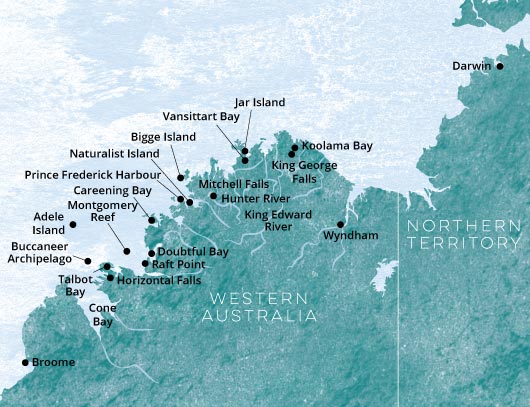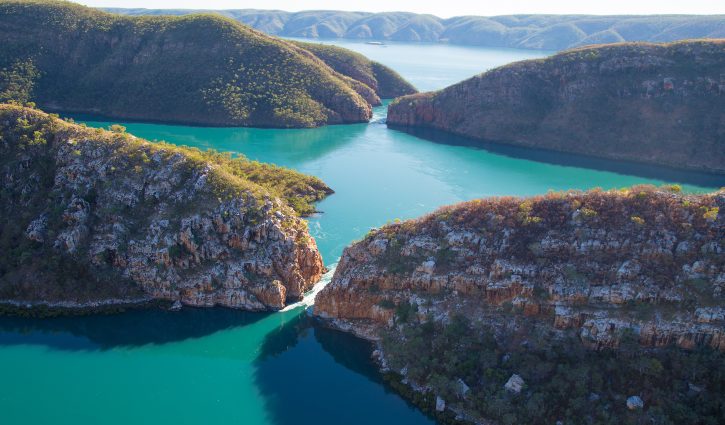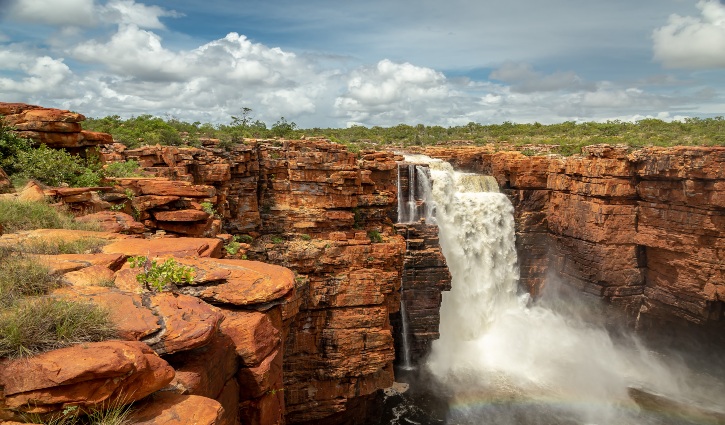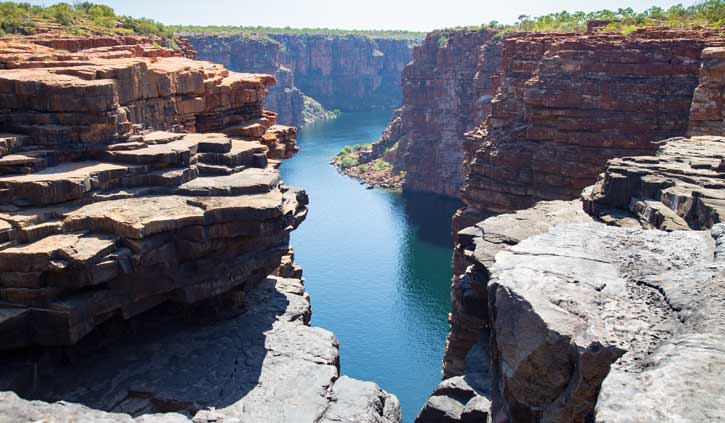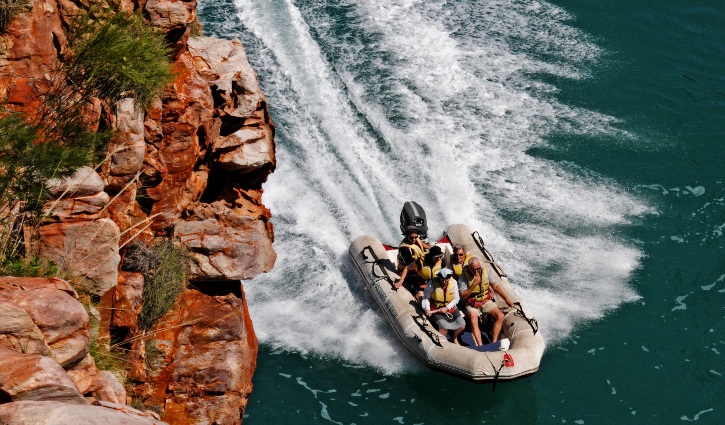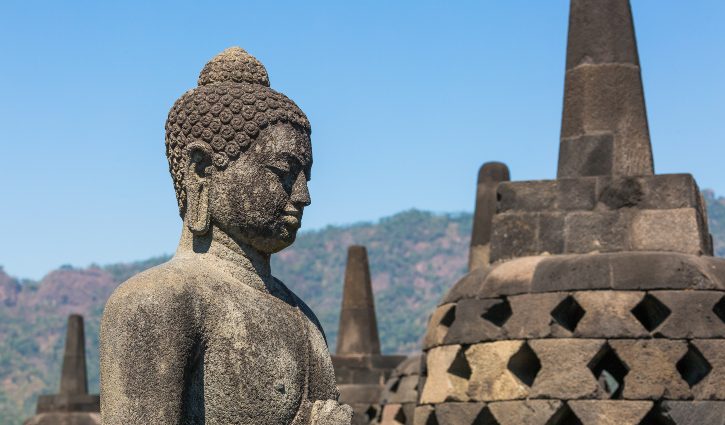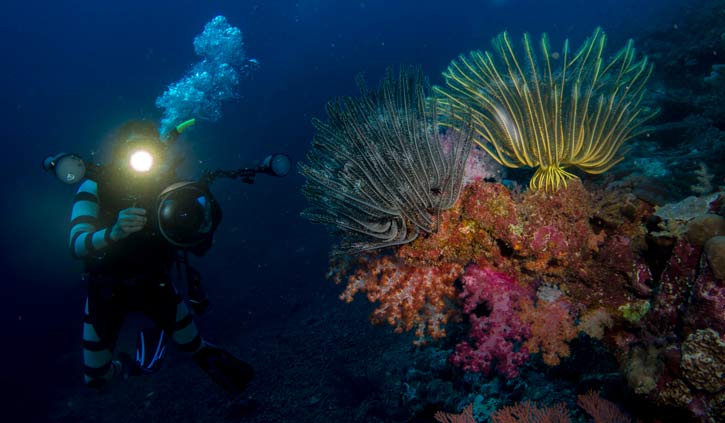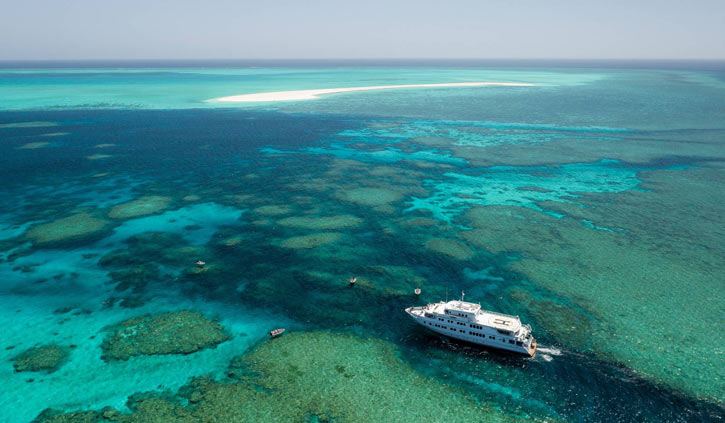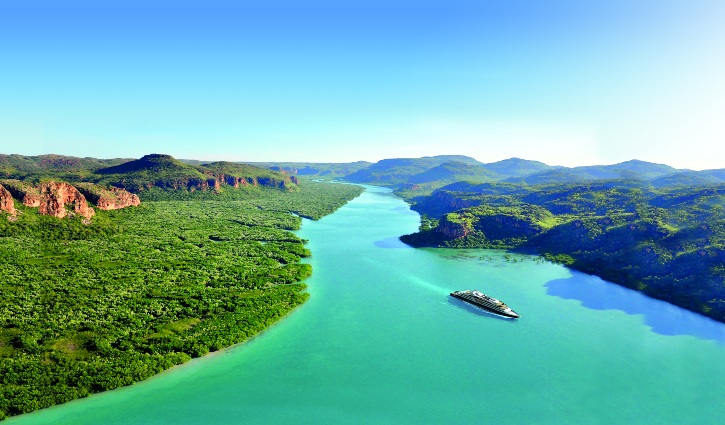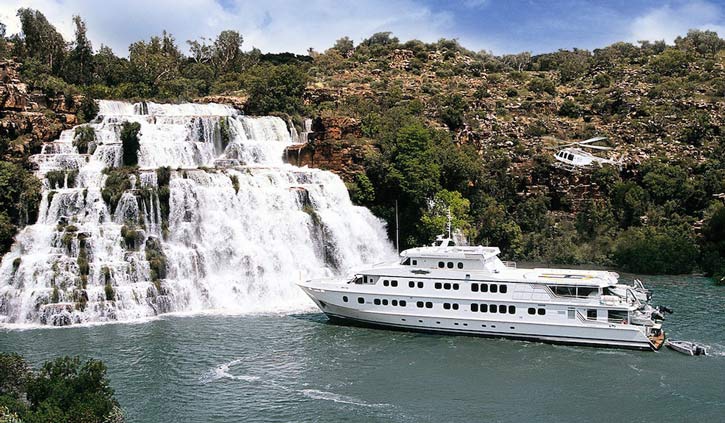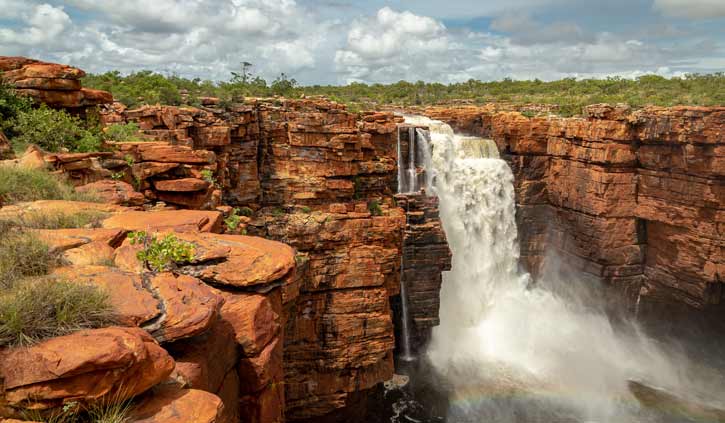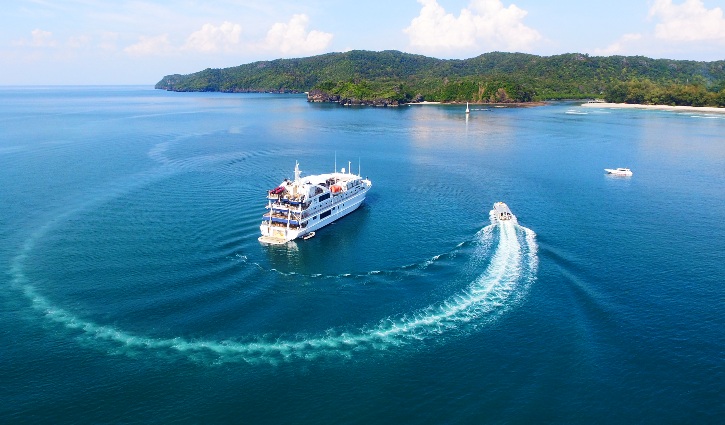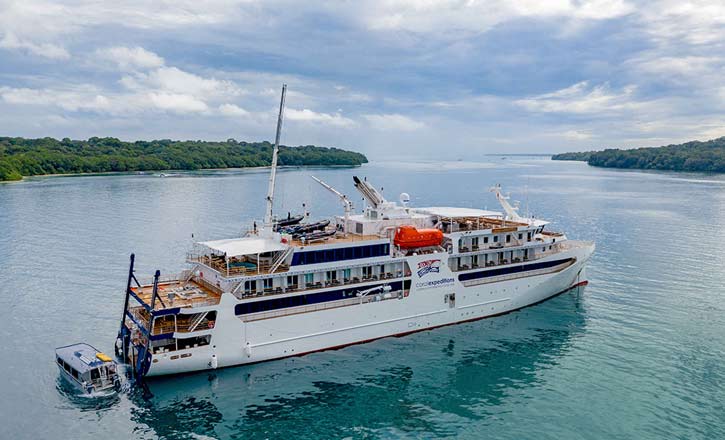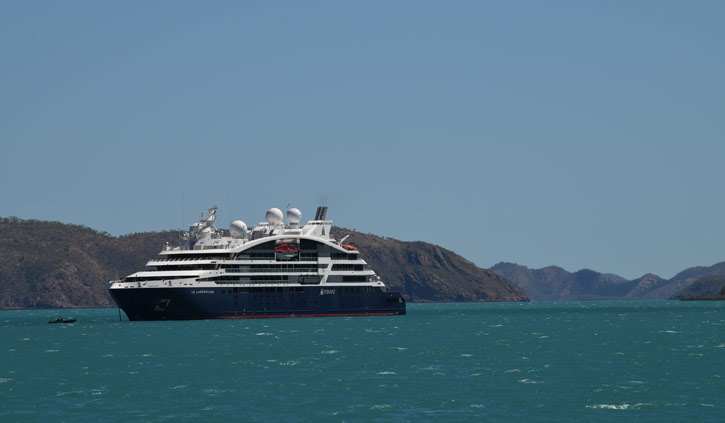
AUSTRALIA – Kimberley Cruises
The Kimberley coast of the Western Australian runs from the Northern Territory border to Wallal (3ookm south of Broome) a distance of 12,000km, with over 2,500 adjacent islands. The Kimberley region is over twice the size of Victoria and is made of ancient rocks that have been dissected by many mighty rivers; the Mitchell, King George, Hunter and Prince Regent to name just a few. The Kimberley was also very likely the place where Australia’s earliest settlers arrived over 40,000 years ago. The Kimberley coastline is also subject to Australia’s biggest tides; at times over 11 metres difference between high and low tide.
Early in the season (March-May) mighty waterfalls falls plunge over the edge of rocky plateaus. The high tidal extremes form the Horizontal Falls as well as causing a daily spectacle at the Montgomery Reef; where rivers,streams and mini waterfalls cascade off the 400 square kilometres of reef. Incredible rock formations are also home to some of Australia’s finest Aboriginal Rock art. Throw into the mix some excellent fishing, walks to remote billabongs and the regions wildlife; salt water crocodiles, dugongs and from June to August a humpback whale migration and you’ll see why a Kimberley Coast cruise is a must do trip.
Search AUSTRALIA – KIMBERLEY Cruises
AUSTRALIA – KIMBERLEY LUXURY & EXPEDITION SHIPS
If you know the ship upon which you would like to explore Central America on click on the image or button below and you’ll be taken to the page for that ship with all of its itineraries.
HIGHLIGHTS OF THE KIMBERLEY COAST
HORIZONTAL FALLS

Described by Sir David Attenborough as “Australia’s most unusual natural wonder” and one of the greatest natural wonders of the world, Horizontal Falls is truly a sight to behold. Located in Talbot Bay, the natural phenomenon shows the power that a change in tide can produce when squeezed through two closely aligned gorges of the McLarty Range. The tidal movements can change the ocean level by up to 4 metres and when the tide ebbs and flows it produces a powerful rush of water producing the mesmerizing ‘Horizontal Falls’.
MONTGOMERY REEF
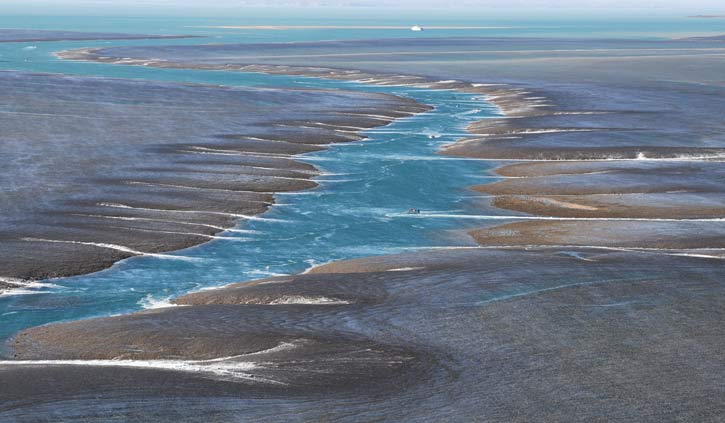
Montgomery Reef sits about 20 kilometres off the Kimberley coast of Western Australia. The reef has a total area of 400 square kilometres making it Australia’s largest inshore reef. Montgomery Reef is a unique place caused by the unusually wide tidal range, up to 10 metres. The outward flow of the tide forms torrents of water, creating many rivers as well as hundreds of cascading waterfalls. Over a period of some hours as the water levels drop more than 4 metres of reef is exposed.
The reef has a wide range of corals (over 100 have been identified). The reef provides feeding ground for many wading birds, turtles, manta rays, black tipped reef sharks, and occasionally dugongs. The reef and island were named by Philip Parker King, the first European to sight the island in 1818. King named the island after the ship’s surgeon, Andrew Montgomery.
Next to the reef in the Buccaneer Archipelago High Cliffy Island were once home to the Yawijibaya people, reported to be ‘giants of the north’ who stood up to 7ft tall. Evidence shows that these early inhabitants of the area had been there for over 7,000 years, other sites not far from here are believed to date back over 30,000 years, some suggest much earlier.
KIMBERLEY WATERFALLS
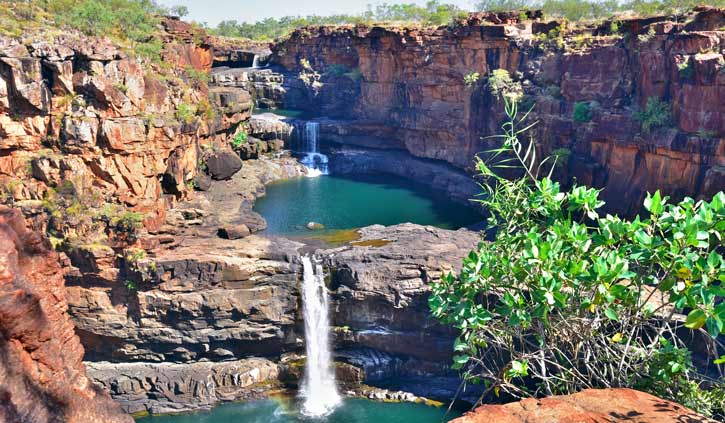
The Kimberley coast is littered with many beautiful waterfalls. Many can be accessed by ship, others, like the Mitchell Falls require a helicopter to access (e.g. True North).
King George Falls, King Cascades, Eagle Falls are best viewed early in the season, March or April. As the dry season progresses the levels of water passing over the falls will decline. In 2019 by August many of the flows had reduced to a trickle; even then visiting these sites was still a powerful experience.
ABORIGINAL ART
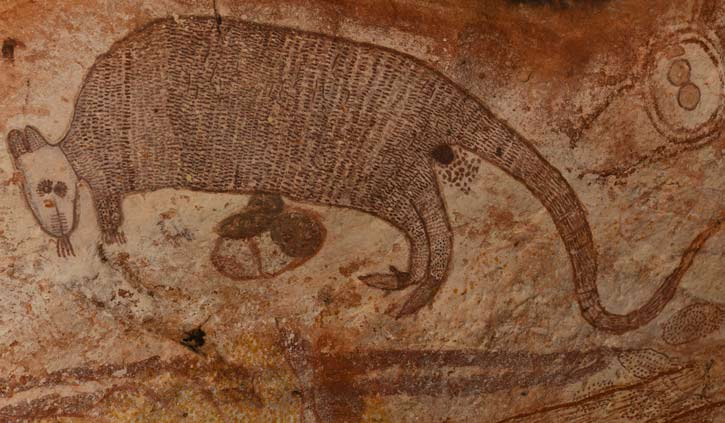
The Kimberley region has numerous excellent aboriginal art sites and is home to the controversial Bradshaw art (or Gwion Gwion) and further south see pristine examples of Wandjina art. The unique Gwion Gwion rock art was first seen by Western eyes in 1891 by pastoralist Joseph Bradshaw. There is significant discussion about the age ranging from 5,000 to 50,000 years. Several sites are close to the coast and can be accessed with a short walk. Other significant sites can only be accessed by helicopter (True North carries an EC130 B4 which can accommodate up to six guests).


